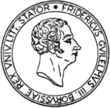Calculator from the 17th century - Burattini or Morland?
This week, the focus is on a 17th century calculating device that was used to convert currencies and count money. Due to historical events, the wrong person was probably named as the inventor of this object for years: the polymath Tito Livio Burattini, who is said to have given this machine to Ferdinando II de' Medici. The identity of the designer of this calculating device has not yet been conclusively established, but there are some significant indications that it was probably designed by Samuel Morland. The original is on display at the Museo Galileo in Florence, where it was kindly allowed to be examined, measured and documented.
This calculator does not have an automatic tens transfer mechanism, but the number to be transferred to the next digit is displayed on a marker disk above each digit. The tens are then carried over manually by turning the next digit by the corresponding number of tens and resetting the marker.
The student Eileen Duong made this video as part of the lecture “History of Machine Computing” with Professor Dr. Ina Prinz and shows not only the construction of the calculator but also an exciting insight into the question of its designer.
We hope you enjoy our new “Calculating Machine of the Week”!






